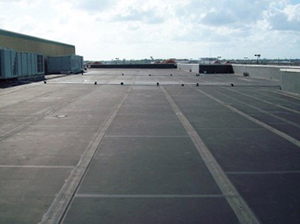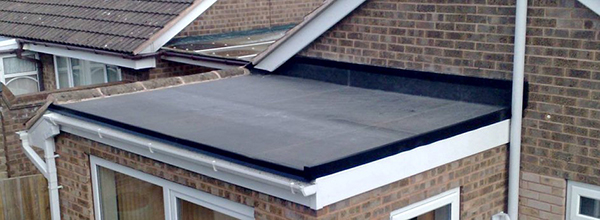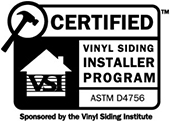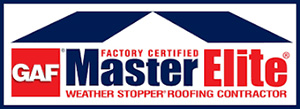A popular choice of material today, especially for commercial and industrial roofing, is rubber. While this might come as a surprise, Ethylene Propylene Diene Monomer Rubber or EPDM roofing has a host of benefits to offer, hence its popularity. But before investing in rubber roofs, it makes sense for property owners to understand how it fares under different conditions. Read on to learn more about the pros and cons of rubber roofs before you make your final decision.

For more help selecting the best roof coating material for your flat roof, contact the experts at Schneider Roofing today. As a trusted roofing company serving the greater St. Charles and St. Louis area, we aim to provide excellent service and expert solutions for all our clients.
The Advantages of Rubber Roofs
Rubber roofs are often the preferred choice where there is a vast expanse of a flat roof to be covered. They are a durable and affordable solution, offering many benefits. If you are looking for a high performance roofing solution, then this might just be it for the following reasons:
- An affordable option, rubber roofing fits well into a budget when you have a large expanse to cover up.
- It is a lightweight option too and easy to cart to the site and up to the roof, which lowers your labor and installation costs as well.
- Another labor cost reduction comes from the fact that there is no welding or shearing involved in laying the rubber roof in position. Usually, this comes as a single-ply membrane.
- If your property is located in temperate climes, rubber roofs will give you exactly what you need at a great pocket-friendly cost.
- Fast, easy installation means that you can get the job done quickly with little waiting or downtime.
- Long lasting, properly laid rubber roofs can give you decades of dependable roof protection.
- It is easy to repair or plug minor leaks in your rubber roof with just a tube of liquid rubber or special tape.
- Easy maintenance is one of the biggest pros of the rubber roof.
- Rubber roofing is durable and fire resistant, ensuring your property has greater protection from fire hazards as well.

The Disadvantages of Rubber Roofs
The popularity of rubber roofs for commercial roofing may give the impression that they are flawless, but the fact is that they do have some drawbacks that should be considered.
- On the aesthetics front, rubber roofs are not the best-looking options.
- Rubber roofing needs to be installed perfectly to yield all benefits and finding a professional with expertise can be a challenge. Choosing Schneider Roofing and Remodeling is a simple way to overcome this drawback.
- The typical rubber roof comes in black, which does not bode well for your cooling costs within the premises. However, there are a few lighter shade options available now, and you can also paint the roof with acrylic to address this problem. However, limited color options are still a significant drawback.
- If you will have heavy foot traffic on the roof, rubber roofing can wear off quickly. It is not designed for roofs where you will have workmen walking around frequently to check on or maintain equipment/ appliances.
- If your property is in a high-temperature climate, the adhesive used to glue the rubber roof sheets together can break down quickly, requiring frequent repairs.
Contact Schneider Roofing for New Roof Installation in St. Charles
Rubber roofs have a host of benefits to offer. But whether they are the ideal choice for you depends on many factors that our experts will evaluate during the roof inspection. Call the roofing experts at Schneider Roofing today at (314) 378-6623 to schedule an inspection and request a quote for your roofing services.















